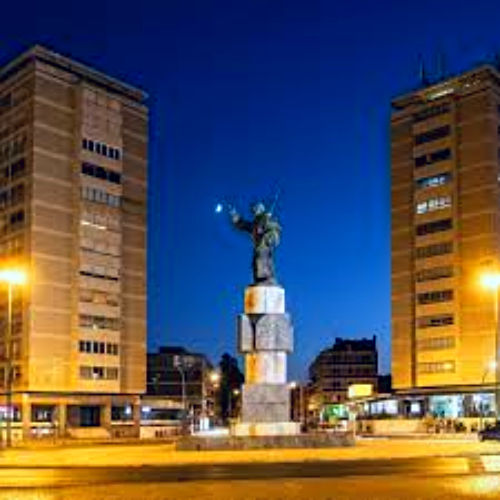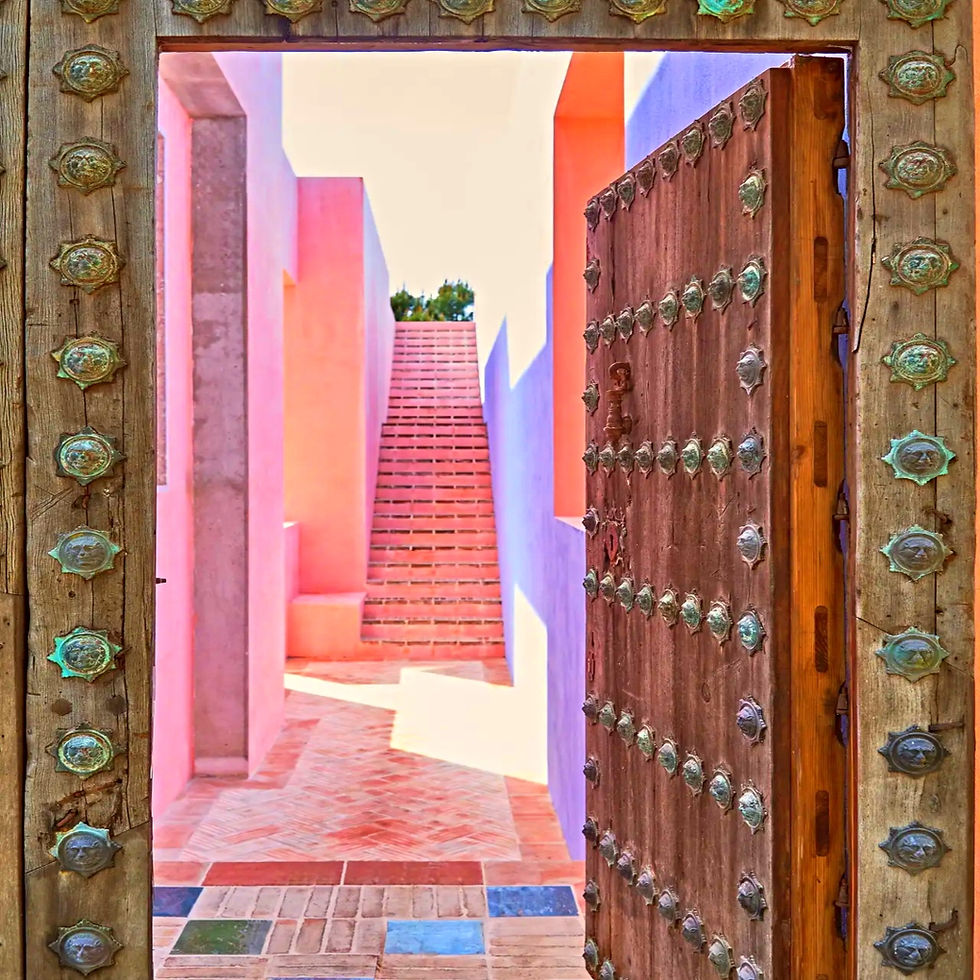What is the best walking trail to remain in the shade in Lisbon?
- Valerie Charoux

- Aug 5
- 5 min read
Updated: Aug 27

Tourism News Europe - Here are the best walking trails to remain in the shade in Lisbon during the Summer heat:
Lisbon was named Europe’s Leading City Destination 2024 by the World Travel Awards and tourists are flocking to Lisbon for the summer holidays. With the summer heat and visitors flocking to the touristic areas, here is a walking trail to discover an authentic neighborhood in Lisbon for an artistic and cultural discovery while remaining cool.
1 - What are the best walking trails to remain in the shade in Lisbon?
It is now possible to stroll in Lisbon during the summer while remaining cool by discovering the walking trails developed by the EU Cool Noons project. COOL NOONS is an Interreg Euro-MED cooperation project that aims to help Mediterranean cities to re-think their tourism and leisure offer in order to improve the comfort of visitors during the hottest hours of the day and to enjoy cool noons.
This has led to 2 new walking paths for tourists between hotels and the new walking trails that include points of interest for a cool stroll in the streets of Lisbon, one of which is the Alvalade walking trail and the other is the Monsanto Forest Park.
2 - Go for a stroll along the artistic Alvalade walking trail in Lisbon:
The Alvalade artistic and cultural walking path in Lisbon was designed to offer an authentic experience of life in a modern and traditional neighborhood that is outside the more touristy areas. This allows visitors to feel the heartbeat of neighborhood life and enjoy a diverse local commerce that ranges from traditional to modern, including art galleries, good restaurants, green areas, as well as architectural and heritage elements of interest.
Here are the points of interest on Lisbon’s Alvalade walking path:
· Stroll in the José Gomes Ferreira Park:

Lisbon’s José Gomes Ferreira Park is a public green space designed by architect Gonçalo Ribeiro Teles, with free access, that covers about 11 hectares and offers a diverse range of fauna and flora, as well as various types of facilities: two picnic areas with tables and drinking fountains, a children’s playground, a fitness circuit, leisure spaces, and a kiosk with a terrace.
· Discover the iconic Portuguese pavements:

Along approximately 100 meters, colorful decorative elements can be observed in the iconic Portuguese pavement (such as tulips, butterflies, geraniums, and sunflowers). It is a public space for artwork. This pavement, dating approximately from 1956, is one of the only polychromatic pavements in Lisbon. The area is covered by large trees, enhancing its natural beauty and biodiversity.
· Visit the São João de Brito Church:

Lisbon’s São João de Brito Church is an important and structuring element of the neighborhood’s life.
· Have a coffee at the historic Mariazinha shop:

The Mariazinha shop is part of the Shops with History network, which aims to preserve these establishments and historical and cultural heritage, while promoting and revitalizing local and traditional commercial activities.
· Visit the Alvalade Market:

The Alvalade Market frequently hosts organic product fairs, workshops, activities, and awareness campaigns related to healthy living and eating, resource preservation, and sustainability.
· Admire the “Earth Hour” Urban Street Art Mural:

Lisbon’s “Earth Hour” Urban Street Art Mural is an initiative within the scope of ‘Earth Hour’ 2024 that involved community participation in a collective painting. The mural was developed as part of a partnership between the Lisbon City Council, the Alvalade Parish Council, and the Worldwide Fund for Nature (WWF).
The “Earth Hour” mural conveys the message that we are a family, and this family is questioning what the future of the planet will be.
· Stroll along Igreja Avenue:

A stroll along Igreja Avenue, that is the main commercial avenues of the neighborhood, is vibrant and dynamic, bustling with activity from various generations of city inhabitants.
On both sides of the street, Linden trees (Tilia), known for their broad, voluminous canopies and aromatic flowers, provide essential shade on hot summer days, and play a significant role in climate regulation and thermal comfort in public spaces.
· Visit Alvalade Square:

The central part of Alvalade Square includes the Monument to Saint Anthony, one of the patron saints of Lisbon, surrounded by neighborhood-style shopping centres and street restaurants.
· Stroll along the Community urban gardens:

The community spaces between urban blocks form green, permeable gardens that enhance water infiltration into the soil, creating cooler microclimates. These areas offer leisure and recreation spots, fostering social interaction and strengthening neighborhood bonds. Many of these spaces have been developed and maintained by residents, evolving into small gardens and urban farms, oases amidst the urban landscape.
· Discover the artistic Coruchéus Art Studios and Library:

Lisbon’s Coruchéus Art Studios and Library are located in an original complex that integrates 50 studios for artists, as well as the Quadrum Gallery, a library, and other public-use spaces. The Coruchéus Studios are dedicated to the promotion and development of artistic activity in the city of Lisbon, while the Coruchéus Library is located in a historic mansion dating back to the 18th century.
These cultural facilities are surrounded by large trees, an esplanade, a garden, a street art mural, and other shaded and pleasant areas to stay.
· Visit the Galería dos Inesquecíveis (Gallery of the Unforgettable ones) street murals:

Lisbon’s Gallery of the Unforgettable ones aims to honor prominent Portuguese artists through the creation of street art murals. This project seeks to celebrate the culture and history of Portugal, highlighting iconic figures and their contributions in various artistic fields.
· Visit the Teatro Maria Matos (Maria Matos theatre):

The Maria Matos theatre was renovated and the cool interior offers a break from the heat while appreciating its historical and architectural value or attending a cultural event.






